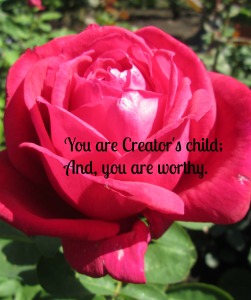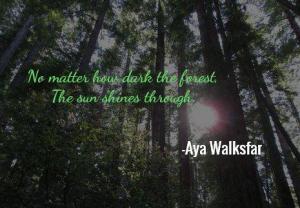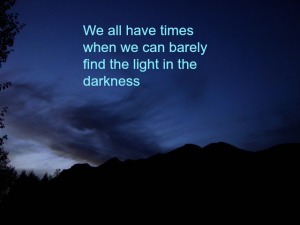Like many authors, I tackle everyday issues in my work–everything from dog fighting, hate crimes, serial killers, human trafficking of children to LGBT rights. All of these issues are close to my heart. I love dogs; I believe we all have a responsibility to stop human trafficking; I have worked with street kids; and I have spent a lifetime fighting for human rights in one way or another–the first time at the age of fourteen.
Like many lesbians, I had hoped that marriage equality would pave the way for acceptance of LGBT rights–not special privileges as some seem to believe–just human rights enjoyed by any heterosexual person. Unfortunately, the fight for LGBT rights is not over.
Why should this concern my readers?
The words of Martin Niemoller, (1892-1984) a prominent Protestant pastor who emerged as an outspoken foe of Hitler, and consequently spent the last seven years of Nazi rule in concentration camp, say it more eloquently than I can:
First they came for the Socialists, and I did not speak out—
Because I was not a Socialist.
Then they came for the Trade Unionists, and I did not speak out—
Because I was not a Trade Unionist.
Then they came for the Jews, and I did not speak out—
Because I was not a Jew.
Then they came for me—and there was no one left to speak for me.
For those living in the beautiful state of Washington where #HumanRights is more widely accepted than some states this may seem like a dead issue. I truly wish it were, but the advent of I-1515 places grave doubt that the fight for human rights for LGBT people, even in Washington state, is over.
According to The Atlantic in January, 2016:
“Twenty-eight. That’s the number of states where it’s not against the law to discriminate against a gay person who’s looking for an apartment, applying for a job, or buying something from a store. Five more states have protections, but with exceptions: New York, New Hampshire, and Wisconsin don’t forbid discrimination against transgender people, for example, and Massachusetts and Utah don’t protect all LGBT people in all situations in which discrimination might arise. The federal government does not protect against this kind of discrimination, either, except in limited cases. Although Democrats have proposed legislation that would change that, the chances of it successfully sliding through a Republican Congress in an election year seem slim.
The irony of gay marriage becoming legal in the United States is that it has made discrimination against LBGT people easier. For example: Many newlywed couples may be asking their employers for spousal benefits for the first time. Depending on where they live, it may or may not be illegal for that employer to respond by firing them—something that happened in a number of states in 2015.”
(see full article http://www.theatlantic.com/politics/archive/2016/01/lgbt-discrimination-protection-states-religion/422730/)
Conservatives are using the #FirstAmendment to attack LGBT rights. The First Amendment states:
Congress shall make no law respecting an establishment of religion, or prohibiting the free exercise thereof;….
While this Amendment originally pertained to establishing places of worship and worshipping without fear of violence, conservatives are using these words to bring back Jim Crow segregation laws that will at first be used against LGBT people.” (emphasis is mine)
Essentially what it boils down to is that I may have the right to marry the one I love, but I may not have the right to take her out to dinner (anyone remember a time when black Americans could not sit in certain restaurants?), or have our photographs taken, or to order a cake to celebrate our anniversary.
Several states have bills to allegedly “protect religious freedom”, but which in reality allows commercial businesses and organizations, including taxpayer funded organizations and governmental workers, to refuse services to LGBT people by simply saying it is against their “sincerely held religious beliefs” to serve certain individuals.
These same people frequently do not adhere to the rest of the tenets of whichever faith they are hiding behind, such as Christianity. If one decides that their “sincerely held religious beliefs”–almost always based on Christianity and the Bible–says they should not serve homosexuals because the Bible condemns homosexuals, then why are these people still divorcing, having sex outside of marriage, wearing cloth made of two different kinds of threads, not closing their businesses on the Sabbath, and so on? Why should they be allowed to cherry-pick which so-called sincere beliefs they have so that they can justify discrimination against a particular group of individuals?
According to Huffington Post, these bills—AKA Religious Freedom Restoration Acts—are popping up all over the place.
“Conservatives are putting forward state-level RFRAs to let people claim religious liberty as a justification for denying services to LGBT people. So you’ve got the evangelical Christian bakery that refuses to bake a cake for a same-sex wedding, for example, or the photographer who refuses to provide services to a gay couple. In some cases, these bills are written so broadly that they also allow discrimination against single mothers, interfaith couples and interracial couples.
Seven states have active RFRA bills: Colorado (HB 1180), Hawaii (HB 1160), Iowa (HF 2032, HF 2200, SF 2171), Michigan (SB 4), Mississippi (SB 2093, SB 2822), North Carolina (HB 348, SB 550) and Oklahoma (HB 1371, SB 440, SB 723, SB 898)
As if that is not enough to worry about there are other classes of bills aimed at limiting the freedom of LGBT people.
Marriage-Related Religious Exemption Laws: these bills provide a religiously based exemption regarding same-sex marriage. Some only apply to religious organizations; others apply to commercial and government officials.(our tax dollars hard at work to discriminate against a group of people)
First Amendment Defense Acts — These bills, in essence, allow any person, business or taxpayer-funded organization to ignore any law that conflicts with their religious beliefs about marriage. Yes, it’s as sweeping as it sounds. It not only discriminates against LGBT people, but can extend to single mothers and anybody with a sexual relationship outside of marriage. A state-contracted counselor, for example, could deny services to a single mom. Taxpayer-funded adoption agencies could refuse to place children in the homes of same-sex married couples. Government employees could decline to file official forms for gay couples (remember Kim Davis?). Three states have active FADA bills: Hawaii (SB 2164), Illinois (SB 2164) and Oklahoma (SB 440).
Pastor Protection Acts — These let churches refuse to perform marriages that conflict with their religious beliefs. The First Amendment already covers this right, but sometimes lawmakers like to pass bills just to send a message. So, we have Pastor Protection Acts. Fourteen states have active PPA bills: Arkansas (HB 236, SB 120), Colorado (HB 1123), Kentucky (HB 17, HB 28), Louisiana (HB 597), Maryland (HB 16), Michigan (HB 4732, HB 4855, HB 4858), Minnesota (SF 2158), Missouri (HJR 97, SJR 39, HB 2000, HB 2040, HB 2730), Mississippi (HB 587, HB 737), New Jersey (AB 1706), Ohio (HB 286), Oklahoma (HB 1371, SB 811), South Carolina (H 4446, H 4508) and Tennessee (HB 2375, SB 2329).
Government-officials-using-your-taxpayer-funds-against-you bills — Some bills let judges and clerks refuse to perform same-sex marriages or issue marriage licenses to gay and lesbian couples. Four states have active bills like this: Kentucky (HB 17, HB 14), Minnesota (SF 2158), Mississippi (HB 586, HB 1342) and South Carolina (SB 116).
No-wedding-cake-for-non-straight-non-white-heathens bills — These allow businesses to refuse to provide goods or services related to marriages that conflict with their religious beliefs. That could mean a frame shop refusing to sell pictures frames that are going to be used for a same-sex wedding, an interracial marriage or an interfaith marriage. Four states have active bills like this: Kentucky (SB 180), Minnesota (SF 2158), Missouri (HJR 97, SJR 39) and Ohio (HB 296).(It isn’t just LGBT people these bills can be used against!)
Other marriage exemption bills — These bills provide yet other kinds of religious exemptions relating to same-sex marriage. Five states have active bills in this category: Kentucky (HB 31), Michigan (HB 4733), Missouri (HB 2754), Oklahoma (HB 1125, HB 1599, SB 478, HJR 1059, SB 973) and South Carolina (H 3022, H 3150, H 4513).
God-Doesn’t-Want-Gay-People-To-Raise-Kids Bills
These let adoption and foster care agencies refuse to provide any services that conflict with their religious beliefs about marriage, such as same-sex couples. This is regardless of what is in the best interests of a child. Three states have pending bills like this: Alabama (HB 158, SB 204), Nebraska (LB 975) and Oklahoma (HJR 1059, HB 2428).
Other Generally Terrible Anti-LGBT Bills
It turns out there are too many categories for all the bills out there, but there’s a few more of note: Two states have bills (AB 1212 in California; SB 210 in South Carolina) that require public universities to provide funds for student organizations, regardless of whether the organization discriminates against LGBT people based on religious beliefs. Three states have bills (HB 325 in Arkansas; HJR 1059 in Oklahoma; and Tennessee’s HB 566, SB 397, HB 1840 and SB 1556) that let health professionals deny services to LGBT people by citing religious objections. And there’s one bill in Oklahoma (SB 1289) that prevents local governments from passing nondiscrimination protections, including LGBT protections, that go further than protections at the state level, such as the law proposed by North Carolina.”
http://www.huffingtonpost.com/entry/lgbt-state-bills-discrimination_us_570ff4f2e4b0060ccda2a7a9
Here is something to remember:
In 1933 Hitler began his reign of terror by first targeting the Jewish people. He proclaimed them inferior (and therefore undeserving of the rights of other German citizens) and began a systematic stripping of their rights, beginning with firing them from their jobs and not allowing them access to services enjoyed by the general German public.
July 14, 1933, Hitler began targeting other groups, namely Gypsies and African-Germans. He stripped them of their rights by using some of the same arguments for taking Jewish rights.
October, 1934, Hitler began targeting LGBT people. Again, he stripped this group of people of the German-citizen rights by using the same arguments as he used against Jews, Gypsies and African-Germans.
When a tyrant, whether they clothe themselves in political or religious rhetoric, begins to strip away the rights of any group of citizens then all citizens need to fear for their freedoms.
As a pagan, I am very much in favor of protection of my religious/spiritual practices; however, that does not mean that I should be allowed to engage in discriminating against other citizens. If I am engaged in public commerce–such as running a restaurant, bakery, photography studio, selling books, or any other business—then I need to serve ALL of the public. If I do not want to serve all of the public then I should not be in business.
Before the Civil Rights Act of 1964, black Americans could not sit at the counter of just any diner. Now, there are certain groups of people who want to bring back those laws of segregation by cloaking them as religious freedom restorations and protections. Segregation is segregation regardless of how you clothe it and regardless of which group of people you target.
If left unchecked, these laws could easily be applied to any group of citizens—
–You are Muslim and it is against my religious beliefs to serve you
–You are black and God said you are inferior and therefore I should not serve you
–You are a single mother or an unmarried couple. God does not permit sex outside of marriage and so I will not serve you.
–You are interfaith or inter-racially married and God does not want us to mix the faiths/races, so I will not serve you.
–You are Native American and therefore a heathen and since you don’t believe in my God, I will not serve you.
Here in the beautiful state of Washington, you can do your part by working against I-1515. Discrimination protects no one’s rights! Discrimination has no place in a free country.









